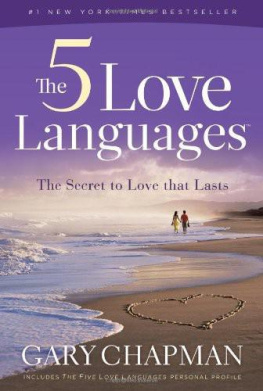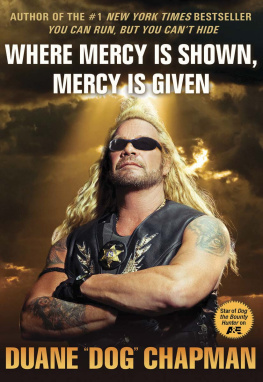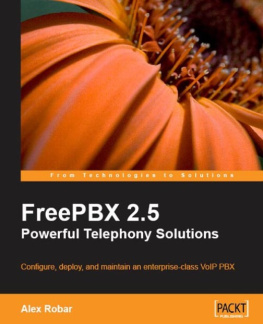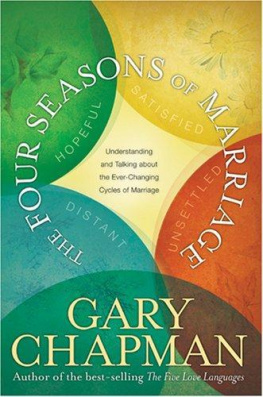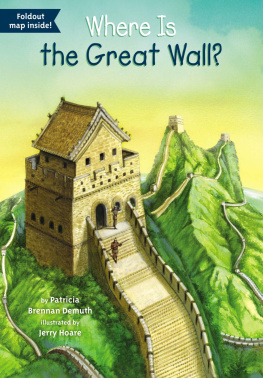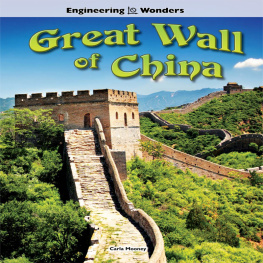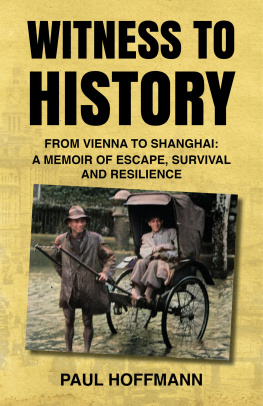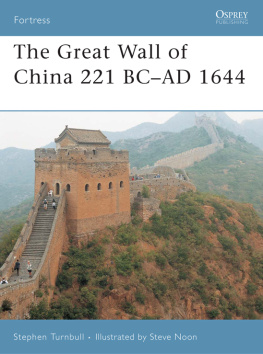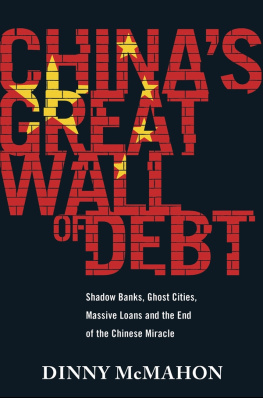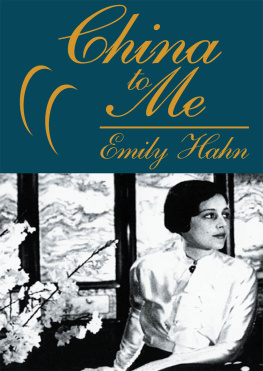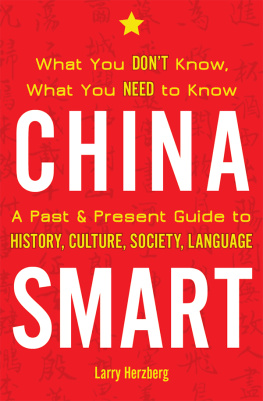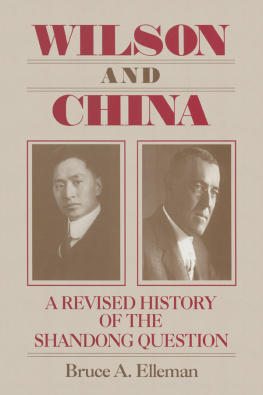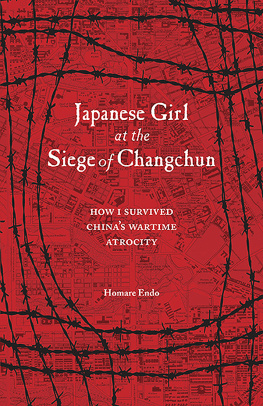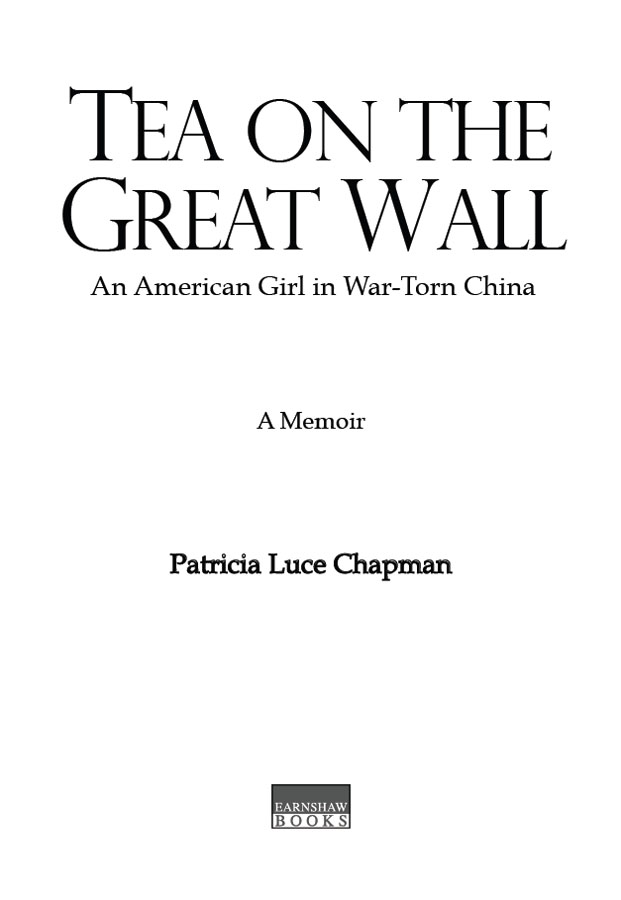
Tea On The Great Wall
By Patricia Luce Chapman
ISBN-13: 978-988-82730-0-3
2014, Patricia Luce Chapman
Editor: Carole Dawson, Richard Marek
Consultant in Chinese Language: H. Christopher Luce
Cover Design: Coco Huang
First printing January 2015
All rights reserved. No part of this book may be reproduced in material form, by any means, whether graphic, electronic, mechanical or other, including photocopying or information storage, in whole or in part. May not be used to prepare other publications without written permission from the publisher except in the case of brief quotations embodied in critical articles or reviews. For information contact
Published by Earnshaw Books Ltd. (Hong Kong)
D EDICATION
To
William McGill Botond
Henry Booker Botond
Thomas Scott Botond
Glenis Marie Adkins Luce
My beloved grandchildren, who inherit an interesting past, and with Gods help will each enjoy an eventful and delightful future;
and to the people of China who cared for me, who taught me right from wrong and who shaped me over my first years. With this book, with these tears in my heart, I thank you.
Zhia zhia noong

xiexie nin

A LSO BY P ATRICIA L UCE C HAPMAN
Honey Come Dance With Me
Survivors Guide to Grief: be like a starfish
To Bernard Berenson with Love
It is a terrible thing for a people when an enemy settles over the land.
Edna Lee Booker, 1940
China will be a great force for Good or for Evil. Let us pray that the Good prevails.
Elizabeth Root Luce, 1948
A CKNOWLEDGMENTS
A LL OF MY CHILDREN have encouraged and have helped me to write this book. I thank my younger daughter, TinaKrisztina Lee Botond, who year after year pushed and cajoled me to write about my childhood in China for my children and later my grand-children. She also polished much of the text with her editorial skills.
Lila Frances Livingston Luce, my older daughter, spent precious hours reading and editing the draft manuscript, applying her logical and creative mind to the structure of a complex subject, and helping me in other countless ways.
My older son KitHenry Christopher Luce--with his wife Tina emailed replies pithy with content in reply to my questions; I shamelessly drew on his profound knowledge of the Mandarin language and Chinese arts and on her Shanghainese. In addition, Kit has been an exceptional line and content editor. Most recently he entered the Chinese and English inserts in the Glossary.
My youngest, Sandy, Andrew Istvn Botond, with his wife Lucina provided the indispensable motivation: their sons, at that time my only grandchildren, the future of my family. I checked with them for their good sense and their judgment throughout the writing.
Then theres my brother John Stauffer Potter, who appears in and out of the story. In my writing of this book and he of his My First Nine Lives, we recaptured a large part of the essence of our lives in China, laughing all the way. I miss him; he died on January 4th just after taking the final draft of his new book, On the Track of the HMS Monmouths Galleon. and Sunken Treasure, to the printer.
I have drawn freely from observations and writings by my mother, Edna Lee Booker Potter, as well as on her sense of fun, and from my father John Stauffer Potters carefully collected family scrapbooks and writings.
My joy in having found, through Kit, my beloved friend/governess in Shanghai, Erika Resek Meier, living in California cant be imagined. Her daughter Pat Meier-Johnson, Pats husband Russ Johnson, and Erikas son Bob Meier, all have been very helpful; but none more so than Bobs son Ryan Meier, who loved his Oma, grandmother Erika, as I loved her. I have drawn from his lovely written testament to her as well as on Erikas own memoir. Her photograph is by Russ.
Marlys Calcina remained a dear friend who confirmed details about our daily lives in Shanghai. Her brain was active until her death at 101 in 2007.
Some true friends have come into my life during the writing of this book, most notably my warm, witty and astute editor Richard Marek in New York who keeps up my self-confidence and gives me moments of laughing out loud by myself here at my desk. My publisher-editor Graham Earnshaw in Shanghai amazes me with his gifts as a singer-songwriter. He also has a supremely professional past in the news world with Reuters, and is now publishing quality books. Austins Carole Dawson taught me to write pop-up rather than flat reportage. New Yorks Susan Schulman courageously read and guided me through four drafts of this book.
The Rockport Writers Group has collectively and individually given me courage, support, and constructive critique throughout the writing. Also in Rockport I want to mention Reanna Zuniga whose keen eye saved me from many a typo. Conferences held by the Texas Writers League in Austin have provided me with hard information on the business.
Invaluable help has come from Shanghai: Tina Kanagaratnam, CEO of AsiaMedia (and unbelievably my daughter Tinas classmate in Washington, DC;) Tess Johnston and her Old China Hand Research Service; the Shanghai Historic House Associations Wm. Patrick Cranley, also Managing Director of AsiaMedia; Bill Savadove, from a notable old China Hand family and important journalist himself. These led me to Diana Hutchins Angulo, an American, one of Shanghais great beauties in the 1930s; Diana and we were in Wei Hai Wei at the same time in 1940 and she has been able to provide me with some details of our lives there. They also led me to Desmond Power, a British Canadian who was interned along with my father in the Poo Tung (Pudong) camp, but then also Lunghua (Longhua) and finally Weihsien (Weixian) Japanese prison camps.
I thank brilliant Lance Morrow for his encouragement and constructive suggestions: The book is good, but could be better. So work, work, work.
At the same time, I thank God for the peace and freedom that I have found in Texas, for the quality of its people, and for the jumping mullets and playing dolphins in the canal in a few steps away in Rockport. Here too the great white egrets and great blue herons squabble over fishing rights.
It is wondrous to live in a place where the birds have the right of way.
Patricia Luce Chapman
Texas
December 2014
N OTES
USAGE
For simplicity and clarity, I refer to place names with the Westernized name current when I grew up. For some, I give the current spelling according to the Pinyin Chinese system, and I have included a glossary of almost all Chinese words listing the Chinese character equivalents.
I retain the rough and tumble Shanghainese for Chinese words used in Shanghai when I was there. For the Chinese words used in North China Shanhaiguan, Wei Hai Wei, Beijing, I use Mandarin, the language of that region and the official language of China.
Pidgin English is the language created, first for business communication and in my time in China also for general communication, between people who dont speak the same languages. It blends English, Chinese, Portuguese, Malay and Indian words into one curious mix. The word pidgin itself means business, and is said to originate from a Chinese word for business.
Next page

